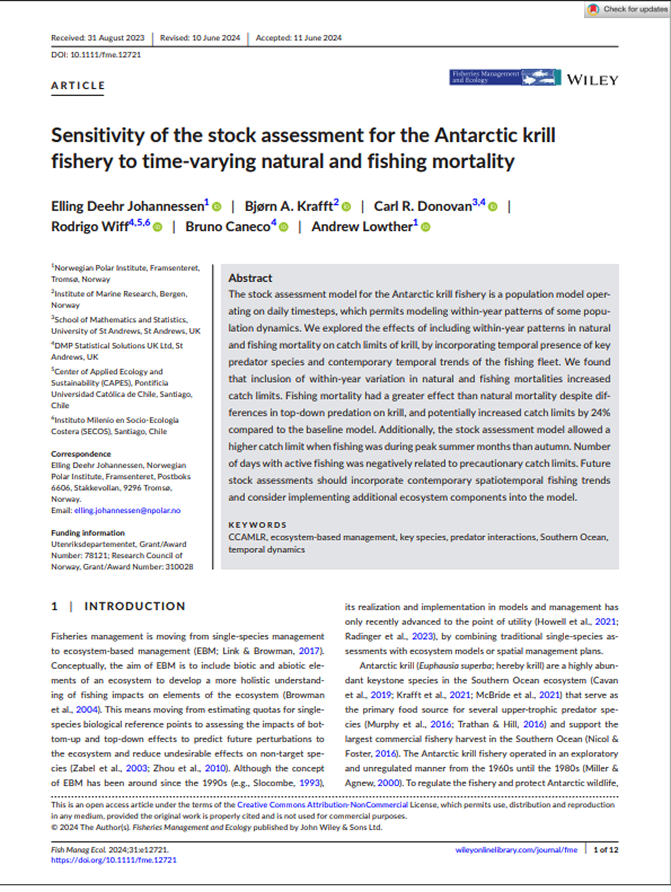Biomass
Antarctic ecosystem
Climate
Krill (Euphausia superba)
Fifty-year change in penguin abundance on Elephant Island, South Shetland Islands, Antarctica: results of the 2019–20 census
Summary
A 2019-20 census of Elephant Island revealed dramatic changes in penguin populations compared to a comprehensive 1970-71 baseline survey. Chinstrap penguin numbers declined sharply by 56.7% (from 122,550 to 53,087 breeding pairs), with the steepest losses occurring on the southern coastline (73.2% decline) compared to northern areas (20.5% decline).Gentoo penguin populations doubled over the 50-year period, with researchers estimating at least 3,672 breeding pairs in 2019-20 (based on 7,345 chicks counted) compared to approximately 2,100 pairs in 1970-71. Macaroni penguin numbers remained stable at comparable sites, with 1,115 breeding pairs counted in 2019-20 versus 1,114 pairs in 1970-71.Adélie penguins maintained only a minimal presence (1 nest with 2 chicks compared to 7 individuals observed in 1970-71), while King penguins showed evidence of expanding their range southward, with breeding activity documented at multiple sites where they were previously absent.The study used both ground-based counting and drone surveys to achieve high accuracy. Researchers noted that population changes have accelerated in recent years, with continued declines observed at monitoring sites between 2015-16 and 2019-20, suggesting these ecosystem shifts are ongoing.

1
Maps comparing Elephant Island penguin survey sites from 1970-71 (left) and 2019-20 (right) showing that chinstrap penguin numbers have declined over 50 years, gentoo penguin populations have increased, and macaroni penguin colonies have remained relatively stable, with small populations of Adélie and king penguins also present. Maps created using ArcMap version 10.6.1 and Adobe Illustrator 2020 version 24.2.1.Key Findings
1
Chinstrap penguin populations declined dramatically by 56.7% over 50 years, from 122,550 to 53,087 breeding pairs.2
Gentoo penguin populations doubled, with breeding pairs increasing from an estimated 2,100 to at least 3,672 based on chick counts.3
Geographic variation in decline rates was significant: northern coastline Chinstrap populations declined by 20.5% versus 73.2% on the southern coastline.4
Population changes are accelerating, with four monitored Chinstrap colonies declining by 25.7-38.2% between 2015-16 and 2019-20 alone.5
Elephant Island represents an ecological transition zone where different penguin species are responding in opposite ways to environmental changes, with King penguins also expanding their breeding range southward.

